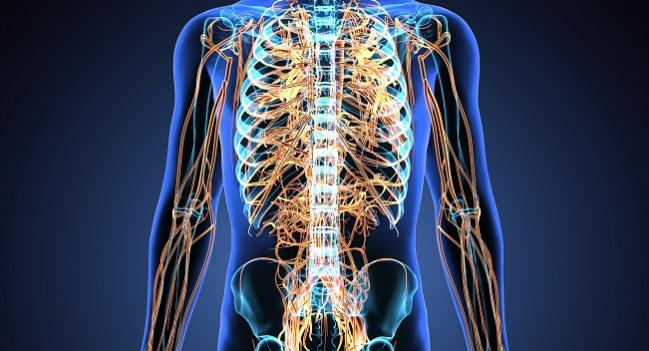Splanchnic Nerve Ablation Improves HFpEF Symptoms, QoL in FIH Study
Improving exertional dyspnea with the endovascular therapy is a potentially important endpoint for patients, one expert notes.

A catheter-based procedure that applies targeted ablation to the greater splanchnic nerve shows promise for improving exercise ability and biomarkers in patients with heart failure with preserved ejection fraction (HFpEF), according to results of a first-in-human (FIH) trial.
“The concept and the pathophysiology have been around for a long time, but I don't think most clinicians are aware of it,” said Sanjiv Shah, MD (Northwestern University Feinberg School of Medicine, Chicago, IL), who presented the results this week at the Heart Failure Society of America Virtual Annual Scientific Meeting 2020. “Besides the typical diuretics and getting fluid off, there's this redistribution of volume [in heart failure]. Increasing the ability of the splanchnic reservoir to hold that blood and not push it to the left heart, whether through this therapy or other therapies, is an interesting and important thing for the field in general.”
The splanchnic nerve, which originates between the T5 and T9 thoracic sympathetic ganglia, is believed to be the source of excess blood volume that results in elevated coronary capillary wedge pressure during exercise or times of stress. The ablation strategy aims to block the neural pathway carrying signals from the chronically active sympathetic nervous system to the splanchnic vascular bed, thereby improving venous compliance and restoring appropriate volume homeostasis within the circulation. According to Shah, limited data on surgical resection of the splanchnic nerve for the same purpose have shown it to be a durable therapy.
In the small FIH endovascular trial of 11 patients, Shah said during his presentation that the results “demonstrate that permanent right [greater splanchnic nerve] ablation in HFpEF is well tolerated and results in clinically meaningful improvements in quality of life and exercise capacity.”
Commenting on the novel therapy, Margaret M. Redfield, MD (Mayo Clinic, Rochester MN), said in light of the limited medical therapy options for improving symptoms and QoL in HFpEF patients, splanchnic nerve denervation is worthy of further study.
“One could certainly postulate that this therapy has the potential to decrease heart failure hospitalizations, or possibly even increase survival, but if it's safe and at least improves exertional dyspnea, that's an incredibly important endpoint to meet in these patients who are desperate for something to make them feel better,” she added.
RCT on the Horizon
For the trial, Shah and colleagues enrolled patients from a single center who underwent greater splanchnic nerve ablation (Satera; Axon Therapies) and were followed for 3 months. To be eligible for the procedure, patients had to have an EF > 50% plus either one or more HF hospitalizations in the last 12 months, elevated N-terminal pro-B-type natriuretic peptide (NTproBNP) levels, or elevated pulmonary capillary wedge pressure at rest or during exercise. They also had echocardiographic evidence of diastolic dysfunction.
All 11 patients had successful ablation and were discharged the following day. At 3 months, they showed improvement in NYHA functional class, with all 11 patients in class II or class I. Kansas City Cardiomyopathy Questionnaire (KCCQ) scores also improved, from an average of 43 at baseline to 64 at 1 month and 79 at 3 months. On the 6-minute walk test, each patient saw a gain of more than 30 meters, Shah said. Additionally, levels of NTproBNP declined from an average of 1,292 pg/mL to 627 pg/mL at 3 months (P < 0.05).
In terms of safety, no patients experienced orthostatic hypotension or worsening of HF symptoms. However, four patients had adverse events related to the procedure: bradycardia attributed to anesthesia, access-site hematoma, renal insufficiency without clinical sequelae, and mild diarrhea.
To TCTMD, Shah said it’s unclear if there is a specific subtype of patients would benefit most from undergoing the ablation procedure. “Based on the way that the therapy works, we would assume that it actually would be relevant to all forms of heart failure with preserved ejection fraction,” he observed.
Based on the positive results of the FIH trial, Shah said the trial sponsor is initiating an RCT called REBALANCE-HF, set to begin enrolling in early 2021. They expect to enroll approximately 100 patients from over 20 sites, and that the enrolled HFpEF patients will be similar to those of the FIH.
“This therapy could help left atrial predominant or left atrial myopathy patients who just really have an elevated left atrial pressure and their right heart is pretty healthy,” he said. “But we also think it will help patients with right-sided heart failure [who] have a lot of central venous congestion and their kidneys and livers are congested.” Additionally, he suggested, patients with cardio-renal syndrome may benefit from lowering pulmonary capillary wedge pressure via ablation.
“So, it's really a broad patient population that we think can benefit from this at the present time,” Shah added. When we do the REBALANCE-HF trial, I think we'll be able to really get a better idea if there's a particular phenotype that benefits most.”
L.A. McKeown is a Senior Medical Journalist for TCTMD, the Section Editor of CV Team Forum, and Senior Medical…
Read Full BioSources
Shah SJ. Endovascular ablation of the right greater splanchnic nerve for the treatment of heart failure with preserved ejection fraction: first-in-human clinical trial. Presented at: HFSA 2020. October 5, 2020.
Disclosures
- The trial was funded by Axon.
- Shah reports research funding from Actelion, AstraZeneca, Corvia, Novartis, and Pfizer; and consulting fees from Abbott, Actelion, AstraZeneca, Amgen, Aria, Axon, Bayer, BMS, Boehringer-Ingelheim, Cardiora, Coridea, CVRx, Cyclerion, Cytokinetics, Edwards, Eisai, Imara, Ionis, Merck, MyoKardia, Novartis, Pfizer, Regeneron, Sanofi, Shifamed, Tenax, and United Therapeutics.
- Redfield reports no relevant conflicts of interest.


Comments